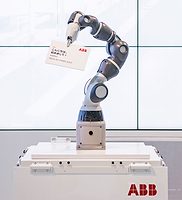Manufacturing News
Research Indicates Labor Shortages Contribute to Revenue Loss

Photo courtesy of Getty Images.
Four-in-ten organizations (41%) have cited revenue losses as a long-term consequence of the labor shortage, according to new research by Visual Components.
The developer of 3D simulation software surveyed more than 300 manufacturing decision-makers in the U.S., UK and Germany. In further findings, increased labor costs (54%) are also identified as the main short-term consequence, alongside delays in projects (36%), inability to meet customer demand and production targets (31%) and profit or revenue declines (29%).
With talent at a premium, organizations have had to spend more on new hires. 94% of U.S. businesses have had to dig deeper into the company reserves to offer higher salaries to attract in-demand talent.
The need to offer higher salaries is only adding to the overall wage bill as overtime becomes a necessity to remain productive. Greater pressure is also being added to budgets as rising costs and inflation (58%) continue to take hold.
“The labor shortage is a significant contributing factor in rising costs for U.S. manufacturers,” says Visual Components CEO Mikko Urho. “Simulation software offers an opportunity to upskill existing staff and reduce the reliance on expensive skilled staff from external sources. This can empower employees on the factory floor to meet customer demands and revenue targets against an economic backdrop that remains challenging.”
Looking for a reprint of this article?
From high-res PDFs to custom plaques, order your copy today!






